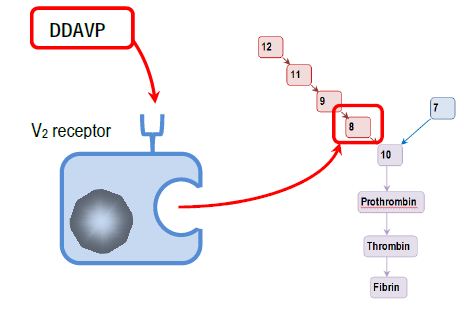Creating your personal brand
Dear Friend,
I hope everyone is enjoying the Christmas festivities! As much as I look forward to Christmas each year and enjoy the build-up, it always seems to fly by, and before you know it, you’re already waiting for the next one. This week, I had the incredible experience of being in Tromsø, Norway, chasing the Northern Lights. It’s amazing to think that for two months every year, Tromsø remains in total darkness, with the sun not rising again until January 21st. But this phenomenon balances out in the summer, when the city experiences almost 24 hours of daylight – a truly unique and surreal experience.
I really enjoy going on holiday because it gives me the space and time I need to finally relax. Although I do have days off at home, I often spend them writing my book, socialising with friends, going to the gym, and so on. But there’s something special about having downtime at the edge of the world – literally (look up Tromsø on Google Maps!). It offers a rare opportunity to reflect on life and my journey.
This week, I found myself thinking about my personal brand and the important decision I made a couple of years ago about where I want to be in 10 years, and how I want to present myself moving forward. When I started In2Med and began exploring the world of e-tech and entrepreneurship, I found it challenging to juggle the roles of both doctor and businessman. What I soon realised is that the deeper I got into it, the harder it became to fully embrace both roles simultaneously.
I know many of you might be in a similar situation – studying medicine or working as a doctor, while also having a side business or pursuing other ventures (especially given the current state of the NHS). While it’s definitely possible to balance entrepreneurship with a medical career, I’ve found that it’s difficult to pursue both paths equally without one inevitably compromising the other.
So, I’d like to share how I made the decision to focus on one path over the other, and how that choice has shaped my journey.

Ask Yourself the Following Questions
To help you decide which path to take, I found it essential to ask myself these three questions – in this specific order:
What am I good at?
This is the most important question to ask yourself (even more so than the other two). You need to have a clear understanding of where your strengths lie. For example, if my career were based purely on what I enjoy, I’d probably say I’d love to be a professional footballer. But I’m a long way from being the next Lionel Messi! I quickly realised that I excel in academics, I’m good at exams, and I also have a strong affinity for medicine. My personality and skills seemed to align best with a career in academia, where I could leverage both my entrepreneurial spirit and communication abilities to stand out. This was a better fit for me than the corporate world, where those same skills are more common and academia is often less appreciated.
What do I enjoy?
Through my business journey, particularly while building In2Med, I discovered that what I enjoyed most wasn’t the business side – the marketing or operations – but rather creating educational resources and writing notes (maybe a bit nerdy, but I own it!). I realised that I’m not the kind of person who enjoys vlogging every moment of my life or constantly sharing updates. In fact, those who know me will tell you that I barely take photos! So, in a nutshell, I learned that I really enjoy being a bit of a “nerd” – diving into the details and enjoying the process of creating something valuable for others.
What image do I want to portray?
This is a key question. When people hear the name Ankit Chadha, what should they think? Is it “YouTuber,” “businessman,” or “doctor”? For me, the answer became clear: I want to be known as a doctor – but not just any doctor. I want to be recognised as an academic and a leader in my field. Alongside that, I want to be known as an educator and lecturer. As for my personal life, I prefer to keep that private.
By reflecting on these questions, I realised that trying to sell personal statement courses on In2Med didn’t align with how I wanted to portray myself. So, about 18 months ago, I shifted gears. I stopped offering paid courses and instead made all my notes available online for free. I also published my first book and made sure to focus on completing my exams. Now, I’m in the process of applying for oncology training. This approach allowed In2Med to become a true support to my medical career, aligning perfectly with the “Dr. Ankit Chadha” brand rather than distracting from it.
There is no right or wrong answer when it comes to choosing your path. Ultimately, you need to pick the one that’s right for you. All I’d say is that the sooner you make your decision, the easier it becomes to pursue that path wholeheartedly.
Merry Christmas, everyone!
Drug of the week
Desmopressin (DDAVP)
This is an ADH mimic that has higher activity on V2 receptors in the collecting tube than V1 receptors.
It is used as a treatment for neurogenic/cranial diabetes insipidus.
It is also used for nocturnal enuresis by reducing night-time urine production.
It treats Von Willebrand disease as it stimulates production of factor VIII.

A Brain Teaser
A 6-year-old girl presents to the GP with her mother with nocturnal enuresis. She is wetting the bed most nights. Her parents have tried toileting before bed time, reducing liquid consumption before bed time and have tried a reward chart for dry nights without success.
What is the next step in treatment?
A: Prescribe demospressin
B: Continue with reward system
C: Enuresis alarm
D: Reassure this is normal and will improve with age
E: Increase frequency of toileting before bedtime
Answers
The answer is C – enuresis alarm.
This question focuses on the stepwise treatment of nocturnal enuresis. In this scenario, lifestyle measures such as decreasing fluid intake and toileting before bed have already been tried. A reward chart has also been implemented without success. Although this is a common problem in children, it is not considered normal over the age of 5 and so reassurance would not help in this situation.
The two options left to consider at this stage are to prescribe desmopressin or to try and enuresis alarm.
The current first-line treatment is an enuresis alarm. If the child is aged under 7, it must be tried before other measures are considered. As the child in the above scenario is 6 years-old, the best option would be to try an enuresis alarm.
Desmopressin may be used first-line if the child is over the age of 7 and does not wish to use the enuresis alarm or if a short term solution is required. This is not the case in this scenario and so would not be the correct answer.




